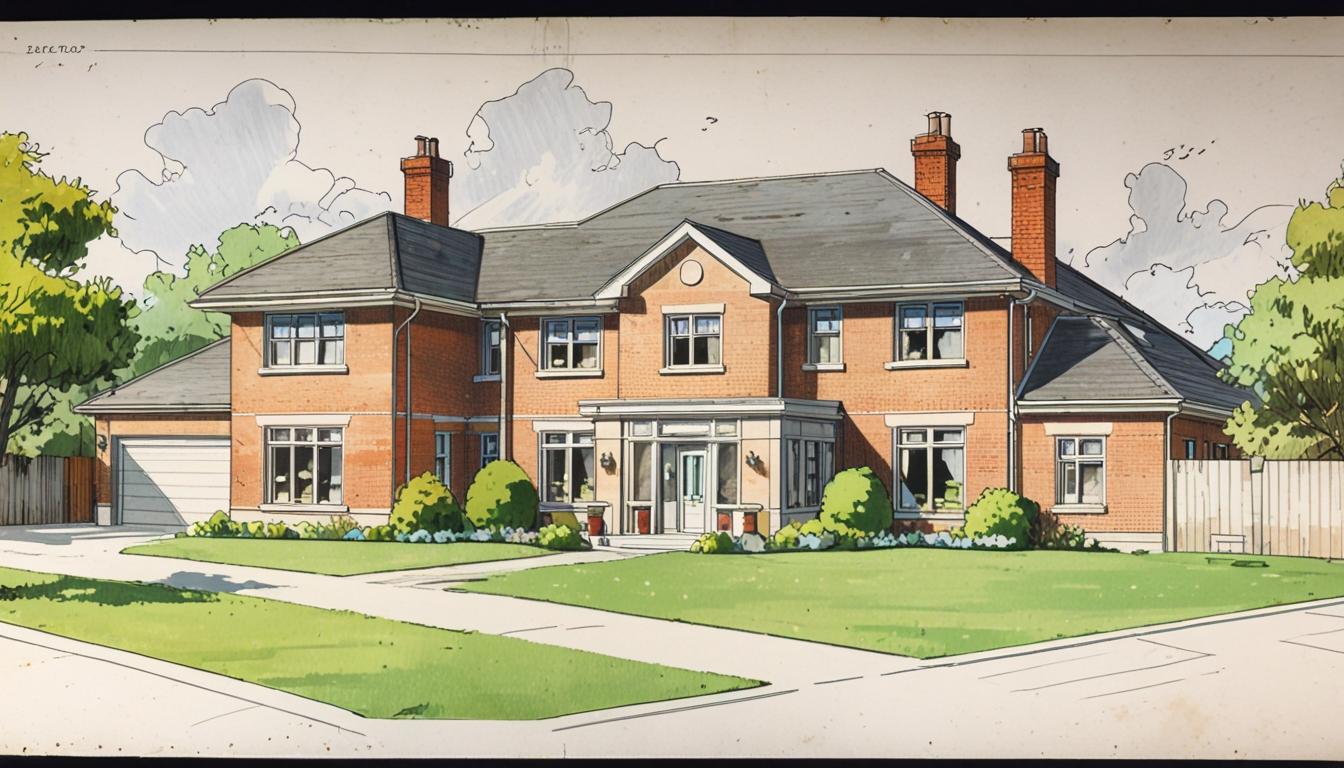A woman in High Wycombe, Buckinghamshire, has been ordered to demolish her newly constructed six-bedroom home after local council officials deemed it "unneighbourly and overbearing." Complaints from neighbours highlight a significant disruption to their gardens, claiming that the property blocks natural light and is out of alignment with the area's established character.
The dispute focuses on a two-storey extension at the back of the house on Marlow Road, which reportedly exceeds the dimensions outlined in the approved planning permissions. Parry Virdee, a planning agent, stated that the builder incorrectly interpreted the plans, leading to the structural infraction. Local residents expressed their ire, suggesting that the owner engaged in a “build it now, ask for forgiveness later” approach, particularly after observing an oversize property nearby that had recently received council approval.
Documents from Buckinghamshire Council reveal that permission was granted last year for a six-bedroom home with three parking spaces. However, subsequent plans for another house of a similar scale were rejected in March. In an enforcement notice, the council stated the extension's size and design resulted in a considerable loss of light to neighbouring properties, diminishing both outlook and general amenity. The notice emphasised that no conditions could mitigate these concerns.
While the council insists on compliance, some residents question the fairness of demolishing the newer home when a larger property was permitted in proximity. One local expressed bewilderment, noting the approved house appears even larger than the one under scrutiny, prompting concerns about consistency in the planning process. Another resident remarked that the oversized property had become an eyesore, drawing unwanted attention from passersby.
Interestingly, the controversy surrounding property development in High Wycombe is not an isolated case. In another instance, a homeowner in Reading was compelled to demolish two illegally constructed homes in her back garden, underlining the perils of neglecting planning regulations. Similarly, a woman in Coventry faced the demolition of a holiday cabin due to neighbour complaints, exemplifying the stringent enforcement of local ordinances.
These cases collectively underscore the delicate balance between individual property aspirations and maintaining community standards. They illustrate the necessity of adhering to established planning regulations to preserve the character of local neighbourhoods. The owners of the High Wycombe property have been given nine months to either comply with the enforcement notice or face further consequences, including potential legal action, as communities increasingly resist developments that threaten their established way of life.
Across the country, the tension between urban development, community rights, and established regulations continues to simmer, with many residents advocating for clear and collaborative planning processes that reflect the needs and desires of existing communities rather than imposing disjointed developments that disrupt local harmony.
Reference Map
- 1
- 2
- 3
- 4
- 5
- 6
- 7
Source: Noah Wire Services
